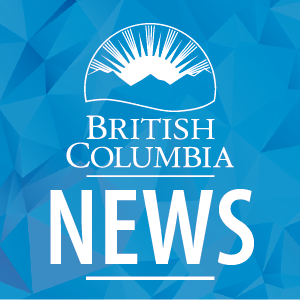Class sizes in British Columbia remain low and stable while the number of students successfully moving to the next grade has reached record highs, according to the Ministry of Education’s latest data on class size and grade to grade transitions.
In 2013-14, successful transition rates reached record levels across all grade levels. Of note, there have been steady, significant improvements in the transition rates for grade 11 students over the past decade, particularly for Aboriginal and English Language Learning (ELL) students as well as students with special needs. Grade to grade transitions, particularly in the senior grades, are important predictors of successful high school completion.
The transition rate for students entering grade 12 increased by 7 percentage points, rising to 89% in 2013-14 from 82% in 2003-04. Looking at specific subgroups, the improvements are even more significant:
- the rate for Aboriginal students increased 14 percentage points, rising to 78% from 64%;
- the rate for ELL students increased 14 percentage points, climbing to 83% from 69%; and
- the rate for students with special needs increased by 19 percentage points, growing to 85% from 66% a decade earlier.
In addition, the latest 2014-15 data shows that class size in B.C. remains low and stable. The average number of students per class remains near historical lows and well below the maximum size allowed in provincial legislation. Of the total number of classes in B.C., 41% have fewer than 24 students and 57% have between 24 and 30 students. Only 1.6% of classes have more than 30 students and the majority of these are classes such as band, drama and gym where it is appropriate and beneficial to have a large number of students.
As school districts work to better serve the learning needs of students, the data shows a continued shift in composition of classrooms with respect to students with Individual Education Plans (IEPs). In recent years, the data shows a trend to fewer classes with three or less students with IEPs and more classes where there are 4 or more students with IEPs. This shift reflects a move towards grouping students with similar learning needs so districts can make better use of specialist teachers and educational assistants, and an increase in specialized courses specifically designed to help students with learning challenges or special needs.
Quotes:
Peter Fassbender, Minister of Education -
“We have one of the best education systems in Canada and in the world and I am very proud of our students’ high achievement. B.C.’s class size remains stable from previous years and we are providing a 33% increase to the Learning Improvement Fund to better support complex classroom needs.”
“Our six year completion and grade to grade transition rates continue to improve, especially for Aboriginal and ELL students as well as students with special needs. Many school districts have come up with innovative ways to better support students and it’s evident their strategies are having a very positive effect on student outcomes.”
Quick facts on 2014-15 Class Size Report:
- There are 66,596 classes in public schools compared to 67,499 classes in 2005-06 due to a decrease in student enrolment (552,788 students enrolled in public schools in 2014-15 compared to 599,492 students in 2005-06).
- Average class size:
- 19.5 students for Kindergarten (17.7 in 2005-06);
- 21.5 students for grades 1-3 (20.8 in 2005-06);
- 25.6 students for grades 4-7 (26.3 in 2005-06);
- 23.2 students for grades 8-12(25.0 in 2005-06).
- Number of students with IEPs per class:
- 15,604 classes (23.4%) with no students with IEPs;
- 14,151 classes (21.2%) with 1 student with an IEP;
- 11,617 classes (17.4%) with 2 students with IEPs;
- 9,068 classes (13.6%) with 3 students with IEPs;
- 6,051 classes (9.1%) with 4 students with IEPs;
- 3,806 classes (5.7%) with 5 students with IEPs;
- 2,404 classes (3.6%) with 6 students with IEPs;
- 3,895 classes (5.8%) with 7 or more students with IEPs.
- There are 50,440 classes (75.7%) with three or fewer students with IEPs (compared to 56,557 classes or 83.8% in 2005-06).
- There are 12,261 classes (18.4%) with four to six students with IEPs (compared to 8,921 classes or 13.2% in 2005-06).
- There are 3,895 classes (5.8%) with seven or more students with IEPs (compared to 2,021 classes or 3.0% in 2005-06).
- There are 1,812 classes with students who all have IEPs. Examples of classes include: Learning Resource 9, Life Skills 11, Communications 12, Modified Math 11 and Modified Math 12, Life Skills 1- Job Preparation, Life Skills Home Economics.
Quick Facts on 2013-14 Grade to Grade Transitions:
- A total of 268,139 students from Grades 6-11 successfully transitioned to the next grade.
- Number of students who transitioned to the next grade:
- 42,414 (98%) Grade 6 students (compared to 48,855 students or 97% in 2003-04);
- 43,200 (98%) Grade 7 students (compared to 49,408 students or 97% in 2003-04);
- 44,070 (97%) Grade 8 students (compared to 50,121 students or 95% in 2003-04);
- 44,991 (97%) Grade 9 students (compared to 48,907 students or 94% in 2003-04);
- 46,437 (93%) Grade 10 students (compared to 48,805 students or 91% in 2003-04);
- 47,027 (89%) Grade 11 students (compared to 44,877 students or 82% in 2003-04).
Learn More:
Class Size Report: http://www.bced.gov.bc.ca/reports/pdfs/class_size/2014/public.pdf
Grade to Grade Transitions: https://www.bced.gov.bc.ca/reports/pdfs/transition/prov.pdf
Fact sheets on class size, class composition and student achievement in B.C.: http://www.newsroom.gov.bc.ca/ministries/education/factsheets/
Six-year completion rate: http://www.newsroom.gov.bc.ca/2014/12/bcs-six-year-student-completion-rates-continue-to-climb.html
BC's Education Plan: http://www.bcedplan.ca/
Media Contacts:
Government Communications and Public Engagement
Ministry of Education
250 356-5963


